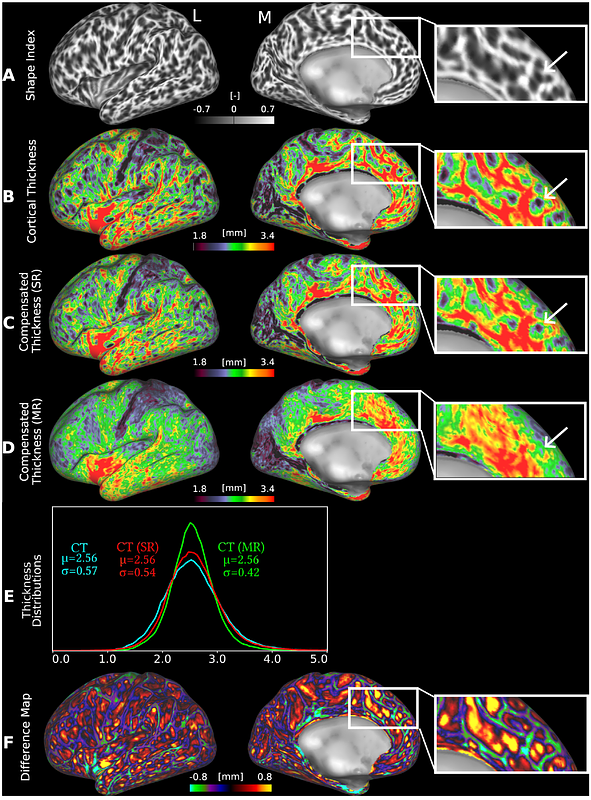Compensating Cortical Thickness for Cortical Folding-Related Variation

Compensating Cortical Thickness for Cortical Folding-Related Variation
Demirci, N.; Coalson, T. S.; Holland, M. A.; Van Essen, D. C.; Glasser, M. F.
AbstractCortical thickness is a widely used biomarker of brain morphology and health, yet it is dependent on local cortical folding. Because gyral crowns are consistently thicker than sulcal fundi and cortical folds vary widely across individuals, these fluctuations introduce unmodeled nuisance variance that can obscure meaningful biological effects of interest. Previous global methods of folding compensation incompletely compensate for folding effects on cortical thickness and the spatial smoothing that is typically used to reduce these effects in the literature also markedly degrades spatial localization precision. To address these limitations, we developed a novel method for folding-compensated cortical thickness estimation that uses nonlinear local multiple regression with five folding measures to model and more completely remove folding-related variance from cortical thickness. This approach estimates what cortical thickness would have been in the absence of folding, yielding a more biologically interpretable measure of cortical architecture. We applied this new approach to data from the Young Adult Human Connectome Project (HCP-YA) and Aging Human Connectome Project (HCA), demonstrating substantial reductions in intra-areal and inter-individual variability, substantially increasing standardized effect sizes of age on cortical thickness while preserving the neurobiologically expected patterns, and avoiding the loss of spatial precision that occurs with the spatial smoothing that has traditionally been used in the literature. The method has been integrated into the HCP pipelines, facilitating its widespread use. By attenuating folding-induced variability, this technique enhances cortical thickness as a structural phenotype and may support more accurate cortical parcellation, longitudinal tracking, and biomarker discovery in brain health and disease.